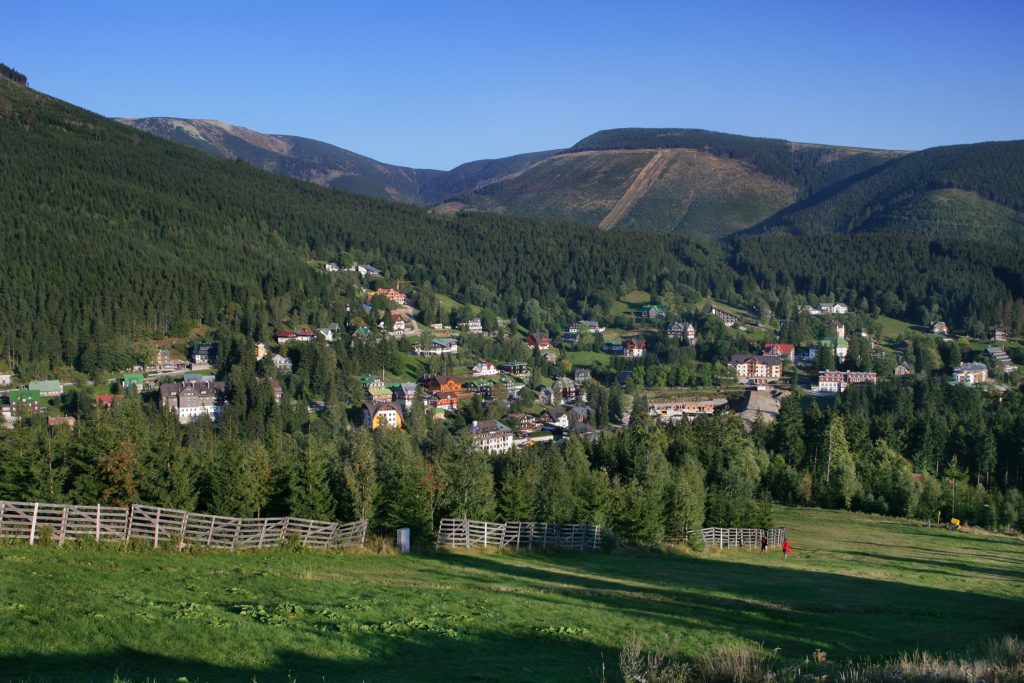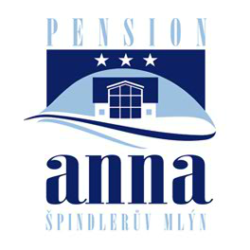
ŠPINDLERŮV MLÝN – PEARL OF THE GIANT MOUNTAINS
| SUMMER OFFERS 180 km of hiking trails nature trails cable cars guided tours 10 tennis courts summer bobsleigh track summertubing jogging, fishing, mini-golf cycling routes bicycle rental riding school paragliding boat rental horse-drawn carriages coach tours promenade concerts, exhibitions playground rope park aquapark swimming pools and wellness | WINTER OFFERS cable cars and 20 lifts ski schools children ski schools 25 km of downhill runs 70 km of cross-country trails 130 km of ridge roads ski-alpinning winter hiking repair shops and ski rentals snowtubing snowpark for snowboardists 4 km sledge slide track horse-drawn sleigh ice skating swimming pools and wellness aquapark snowmobile rental indoor tennis courts |
The Giant Mountains, with their deep forests, formed part of the Kingdom of Bohemia. Since the Neolithic, they have been inhabited by Slavic tribes. Already in 1241, the provostship of Vrchlabí was founded by the Benedictines. Two important trade routes led across the ridges. Discovery of ores and precious stones in the 16th century attracted many foreigners – a legend about Krakonoš was created. Mining also brought a mining expert Kryštof from Gendorf, supported by the Habsburgs, who controlled the entire territory of the Giant Mountains. Instead of the old fortress, he built a famous chateau in Vrchlabí in 1548 with four corner towers. He started cut down trees for the mines, and eventually supplied wood to the Kutná Hora mines. With mining, the glass industry also expanded – to this day there are world-famous glassworks in Harrachov. With the decline of mining, a future farm developed on felled clearings, Luční bouda, Martinovka and Brádlerovy boudy were established. After the Thirty Years’ War, Albrecht of Wallenstein ruled here, after his assassination by Morzins. The ultimate act of the Counter-Reformation was the construction and consecration of the Chapel of St. Vavřince na Sněžka in 1681 and the consecration of the Elbe spring in 1684. The borders with Silesia were adjusted, the western part was controlled by the Czech count Harrach.
At the beginning of the 18th century, there were efforts to resurrect the mines. In St. Peter worked for up to 50 miners who met at the miller Špindler. The construction of the church of St. Peter – the protector of metalworkers and metallurgists – was consecrated in 1793, and the town of Špindlerův Mlýn was founded. Due to the difficulty of transport, the mill itself later disappeared and the mines also ceased their activities. People began to move to the mountains, the sheds of Špindlerův Mlýn, Petrovka, Davidovky, Pudlov, the old Erlebach, Renner and others were converted to year-round living and weaving began. After the abolition of slavery, the inhabitants became tenants and shepherds, raising cattle and goats. When forests began to be systematically restored, the wake-up economy was given strict rules. The new fashion wave of the return to nature (J.J. Rosseau) brought the first visitors to the mountains, at first a rich layer, and later the general public. The huts slowly became innhouses, and hunting spread with forests.
Winter sleigh rides became well known, first from Slezský sedlo to Kowar, and later to Špindlerův Mlýn. Harrach’s idea to equip woodpeckers with ski from Norway laid the foundation for skiing in the Giant Mountains. In the end, the natives also took their production with honor, and the autumn squirrel became part of the life of the mountaineers. Sports associations were established, competitions were organized. The most famous with a tragic end for the racer B. Hanč and his friend Vrbata, it took place in March 1913. The mound, in memory of courage and friendship, stands near the site of the tragedy in the Krkonoše Mountains near Vrbatova bouda. The shed economy ceased to exist and the huts began to serve tourism. In 1914, a valley dam near Špindlerův Mlýn was completed against the floods on the Elbe. With the establishment of Czechoslovakia after World War I, the German bourgeoisie wanted to separate, but the border was occupied by the Czechoslovak army, the forests were mostly nationalized and the Czech Tourist Club promoted the Czech element to the Giant Mountains. With the threat of Nazism, fortresses began to be built on the border ridge for defense, which is why a high-altitude road was built in 1936: Hrabačov near Jilemnice – Krkonoše near Vrbatova bouda (1400 m above sea level), which still serves as a shuttle service in summer. Today, accommodation is available to all visitors throughout the Giant Mountains.
In summer, quiet valleys and beautiful views from the ridges from Pomezní boudy to Harrachov and in the west from the Czech-Polish border road invite you for trips. The Giant Mountains are interwoven with marked hiking trails suitable for all ages. There are chair lifts to some peaks, allowing a view of the mountains even for less able tourists. The most popular are trips to the source of the river Elbe, which flows into Hamburg, Germany, but also to the highest mountain in the Czech Republic – Sněžka (1602 m above sea level). In addition to restaurants and wine bars and bars, Špindlerův Mlýn also offers dance evenings and discos, hotel pools, tennis courts, a fitness center, saunas, skittles, squash, shooting, as well as boats on the dam, fishing. There are large parking lots, taxis, horse-drawn carriages, bicycle rentals.
The winter season in Špindlerův Mlýn usually lasts from December to April. Spindleruv Mlyn has its own specific climate. The slopes are maintained daily, and in Sv. Peter and Medvědín artificially snowed, suitable for advanced, beginners and children. Ski schools provide lessons, rentals and shops offer all sports equipment. International competitions are held here. Snowboarders have their snow park here. Connection between skistadions Sv. Petr and Medvědín provide ski buses. The surroundings of Špindlerův Mlýn offer terrains for winter hiking and cross-country skiing, regardless of age and skill. In addition to marked paths, cross-country trails of various kilometers are maintained. There are chair lifts and ski lifts in operation. Even in winter, visitors can swim in the hotel pools, play tennis in the halls, take advantage of the hotel’s bowling alleys and bowling, squash, table tennis and billiards. In addition to the disco, there are concerts, dance evenings and film performances. Taxis and horse-drawn sleighs are available. The bus to Špindlerův Mlýn near the Polish border (1200 m above sea level) provides daily transport. It is possible to buy common consumer goods in the city.
source: http://www.krkonose-net.cz/spindleruv_mlyn/index_cz.htm




